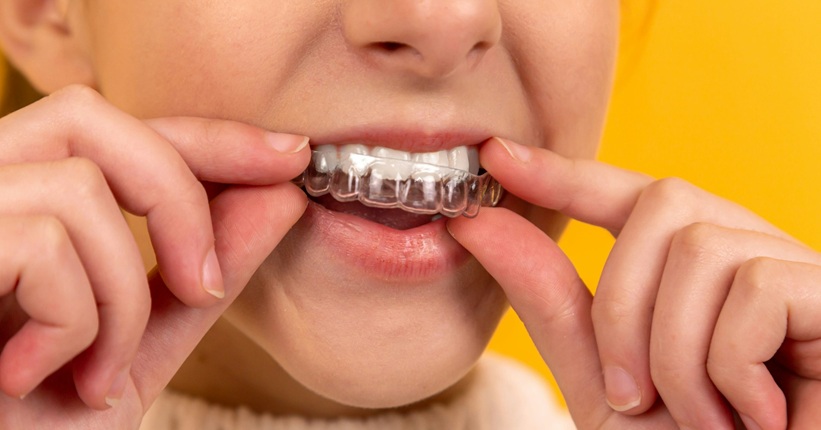
Dry alveolus - causes, symptoms, treatment
Dry alveolus is a serious complication after tooth extraction, which affects about 2% of cases. This condition consists in the non-formation or loss of a blood clot in the post-extraction cavity, which causes the bones to be exposed and severe pain. In the article we will discuss the causes, symptoms and methods of treatment of dry alveoli, as well as tell you how to speed up healing and avoid complications.
What is a dry alveolus?
After the tooth is removed, a hole called the “dental bed” or “alveolus” remains in the bone. In the correct healing process, a blood clot forms in this place, which protects the wound and allows tissue regeneration. A dry alveolus is formed when a blood clot does not form or is washed out and the wound remains exposed. This leads to severe pain and the risk of infection.
Most often, dry alveoli occur after extraction of the lower molars, especially when the procedure was difficult or the tooth is firmly rooted.
Causes of dry alveolus
A dry alveolus is formed as a result of abnormal wound healing after extraction, when a blood clot does not secure the alveolus. The reasons include:
- Difficult extraction of lower molars with long and curved roots,
- Infection at the site of tooth extraction,
- Cigarette smoking — nicotine inhibits blood clotting and delays healing,
- The use of anticoagulants and steroids,
- Chronic diseases, such as diabetes, cardiovascular or autoimmune diseases,
- Leaving fragments of roots in the alveolus.
Symptoms of dry alveolus
Dry alveolus usually manifests itself within 2-5 days after extraction and is characterized by:
- Severe, throbbing pain at the site of the removed tooth, radiating to the ear, neck or temple,
- Unpleasant smell and taste in the mouth,
- Swelling and redness of the wound area,
- Sometimes elevated temperature and fever,
- Difficulty opening the mouth and swallowing,
- Loss of a blood clot from the wound,
- Problems with the installation of the prosthesis, if the extraction involved the front teeth.
Treatment of dry alveolus
Treatment should be carried out by a dentist and includes:
- Antibacterial rinses — help to clean the wound and reduce inflammation,
- Removal of root residues or dead tissue — if they are the cause of the problem,
- Clot supplementation with a special preparation — to protect the wound,
- Analgesics — to relieve severe pain,
- Surgical intervention — in severe cases where other methods fail.
It is important to go to the dentist quickly after the onset of symptoms to avoid complications.
Home ways to relieve symptoms
Although treatment requires a visit to the dentist, you can help yourself with home methods:
- Herbal rinses (chamomile, sage) — have anti-inflammatory effect and relieve pain,
- Ice packs for the cheek — reduce swelling and pain,
- Avoiding cigarette smoking,
- Taking available painkillers (paracetamol, ibuprofen),
- Avoiding hard, sticky foods that can irritate the wound.
Remember that home methods will not replace professional medical help.
Can a dry alveolus heal itself?
No, dry alveoli do not heal on their own and require dental treatment. The absence of a blood clot exposes bones and nerves, which provokes severe pain and makes recovery difficult. If left untreated, dry alveoli can lead to complications and prolonged discomfort.
How to speed up healing?
To aid healing, it is worth:
- Apply warm compresses to the area around the alveolus,
- Avoid consuming very hot or cold foods and drinks,
- Do not smoke cigarettes,
- Regularly rinse the oral cavity with saline or diluted hydrogen peroxide,
- Take prescribed pain medications.
Dry alveolus under the seams
If a dry alveolus appears under the seams, an urgent consultation with a dentist is necessary. You may need to remove stitches, clean the wound, and apply appropriate treatment to speed healing and relieve pain.
Complications of dry alveolus
If left untreated, dry alveoli can lead to serious health problems:
- The spread of infection to surrounding tissues (eg, sinusitis, abscess),
- Chronic, severe pain,
- Difficulty eating and speaking,
- Tooth displacement and bite problems,
- Delay or interruption of the healing process.
If you suspect a dry alveolus in yourself, you should immediately contact your dentist to get the right diagnosis and treatment.
Content author

Dr. Wojciech Gącienica-Ciułacz
Dr. Wojciech Gącienica-Ciułacz is a dentist for whom dentistry is a true vocation. In his practice, he stands out for his extraordinary ability to listen carefully to patients, thanks to which he is able to precisely adjust the treatment plan to the individual needs and expectations of each person. His approach is based on the deep conviction that effective dental therapy must take into account not only the medical aspect, but also the comfort and well-being of the patient.

Start treatment already today!
Make an appointment and discover why our patients recommend us to their loved ones. We will take the utmost care of your smile.


